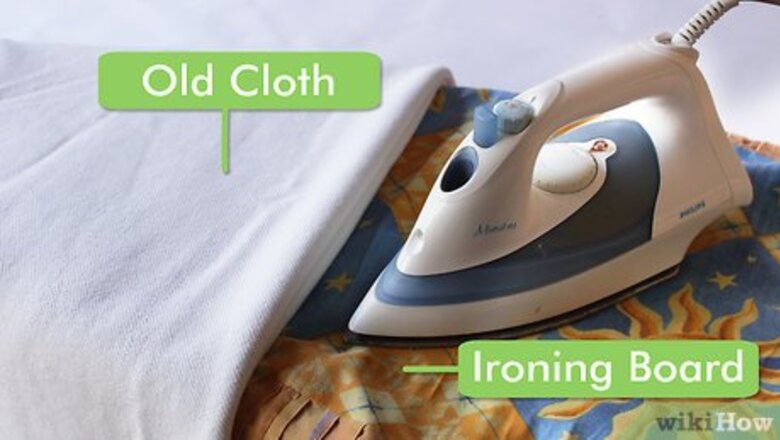
views
Ironing by Fabric Type

Get the necessary equipment together. As the iron can get hot, you want to have all your materials assembled before you begin ironing. You do not want to be fumbling with a hot iron while trying to grab something, so have everything ready before turning the iron on. You will need an ironing board, which is a large, flat surface over which you can iron your clothing. You will need an old cloth to protect delicate items.
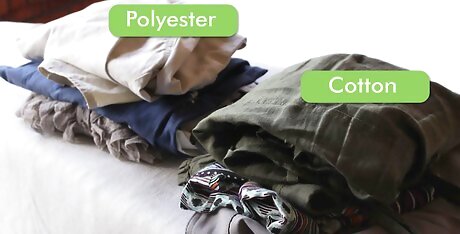
Sort your laundry by material. Different materials require different means of ironing. You should sort your clothing by material. Cotton clothing, for example, should be ironed differently than silk clothing. You will want to start ironing the clothes that require the lowest heat setting, and then move up. Acetate, rayon, silk, and wool should all be ironed at a low setting. For rayon and silk, turn the items inside out prior to ironing. For wool items, place a damp cloth between the item and the iron. Medium heat should be used for polyester, and high heat should be used for cotton. Both fabrics should be slightly damp prior to ironing. Using steam when ironing will help get wrinkles out faster. Steam works best with cotton and wrinkle-prone fabrics such as linen.
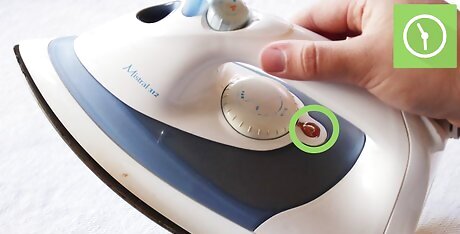
Check that the iron is ready. Irons indicate they are ready in different ways. A light may turn on or off, or an icon may display indicating it's safe to iron. Make sure to wait until the iron is ready to begin. Ironing with a cool iron will be inefficient. If you're unsure how your iron indicates it's ready, check your instruction manual. Be sure to check your clothing’s label so you know the correct temperature to use for your iron.
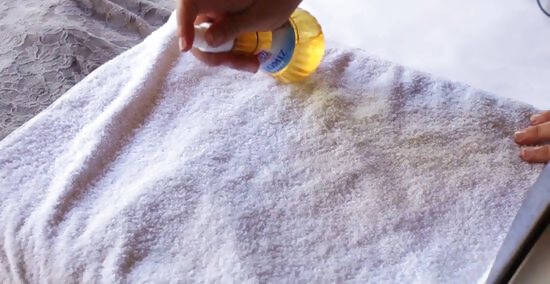
Use a damp cloth when ironing lace and wool. Delicate fabrics should not have direct contact with the iron. Lace and wool should not be ironed directly. Use a damp cloth when ironing these types of fabrics. Make sure the cloth is damp and not sopping wet. If you're unsure of the fabric's material, check the label. This should tell you what the clothing is made from.
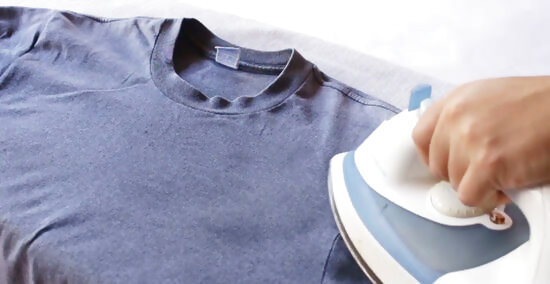
Make sure cotton and polyester fabrics are damp prior to ironing. Cotton and polyester should not be ironed dry. Make sure items made from these materials are slightly damp prior to ironing. You can pull cotton and polyester items out of the dryer before they get completely dry. You can also spritz them with a spray bottle filled with water to get them damp.
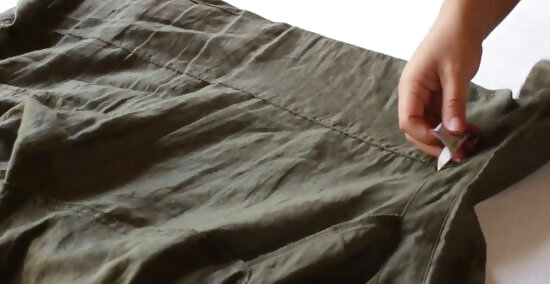
Turn delicate fabrics inside out prior to ironing. Some fabrics are very delicate. Ironing the surface can cause the fabric to look burnt or damaged. If you're working with any of the following fabrics, turn the clothing items inside out prior to ironing: Corduroy Linen Rayon Satin Silk
Ironing Different Categories of Clothing
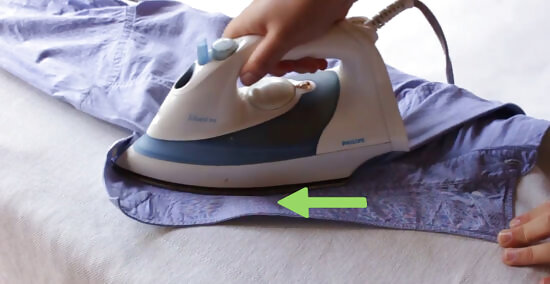
Iron shirts from the collar down. When you iron a shirt, you should start at the collar. Start at the center of the underside of your shirt collar and work your way to the edge. Then, move back to the center and proceed to the other edge. Drape one side of the shirt's shoulder over the edge of your iron board. Work the iron from the shoulder to the back. Repeat on the other side. Work from the cuff to the shoulder when ironing sleeves.

Iron pants from the waist to the leg. If your pants have pockets, turn them inside out and begin by ironing the pockets. If they do not have pockets, you can proceed to the regular ironing process. Drape the top of the pants over the ironing board and start by ironing the waist. Make sure to go lightly when ironing over pockets, as you do not want to create pocket lines. From here, lay the pants on the ironing board flat, with one leg laying on top of the other. You more or less want to fold the pants in half horizontally. Make sure the legs and seams line up. Fold the top leg back over the waist. Iron the backside of the bottom leg. Then, flip the pants over and repeat on the other side.
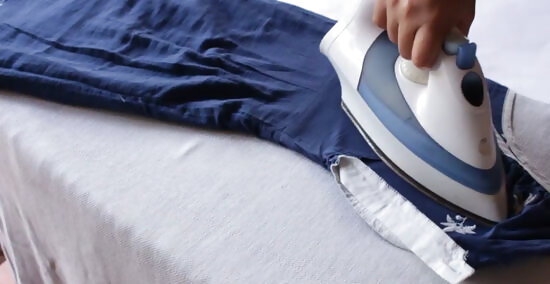
Iron skirts and dresses from the collar down. If your dress has a collar or sleeves, these can be ironed the same way you ironed a shirt's sleeve and collars. With the skirt, drape it over the ironing board. Iron upward, moving from the bottom to the waist. If a skirt is embellished with ruffles, iron the inside of the skirt to avoid flattening the design. Items like buttons should be ironed around, as skirts and dresses have delicate buttons that are prone to damage.
Ironing Safely
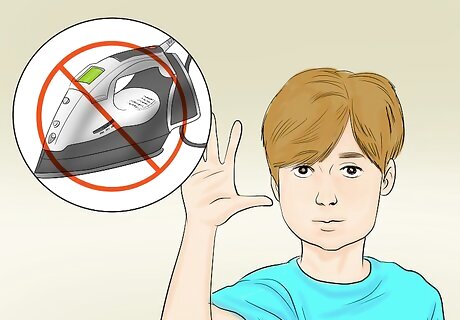
Keep your iron away from small children. An iron is very hot and can cause serious injury for children. Ironing is not an appropriate household chore for small children. You should also keep your iron out of reach of kids when you're ironing.
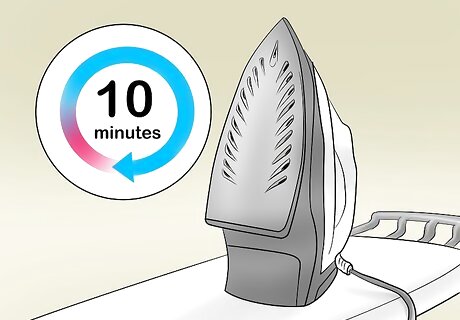
Let an iron cool off for at least 10 minutes before putting it away. An iron gets extremely hot, and could potentially start a fire. After you finish ironing, turn the iron off. You should wait at least 10 minutes before storing the iron, as that will give it adequate time to cool.
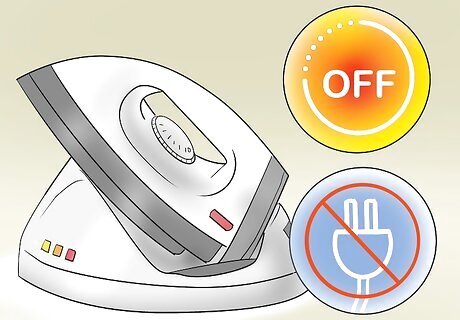
Consider purchasing an iron with built in safety features. As an iron can be dangerous, consider purchasing one with safety features. Safety features can help prevent accidents. A cordless iron can be a great investment. If someone trips over the iron's cord while you're working, you or the other person could get burnt. An iron with an automatic shut off feature can also help. This way, if you accidentally leave the iron on, it will not start a fire.
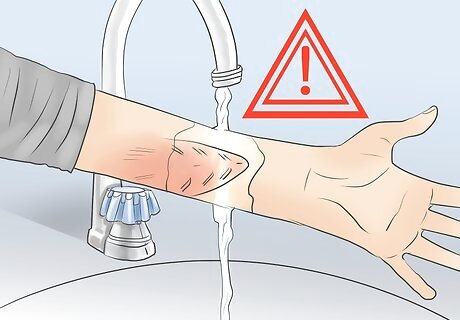
Treat a burn quickly in the event of an accident. A burn will heal faster and hurt less with proper treatment. As soon as you or someone else is burnt, run the burn under cool running water for about 20 minutes. Never use ice, oil, butter, or soy sauce on a burn. This can cause skin damage. If a burn is bigger than a small coin, seek medical attention.
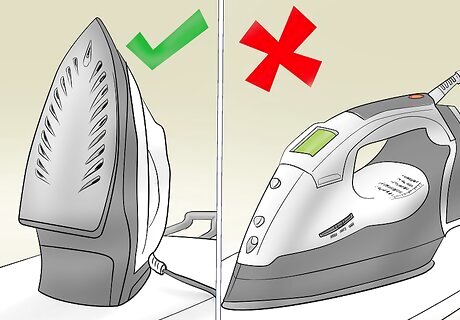
Do not leave a hot iron face down. This could cause the iron to burn a surface, and even start a fire. Always stand the iron upright when you need to step away from your ironing for a moment.













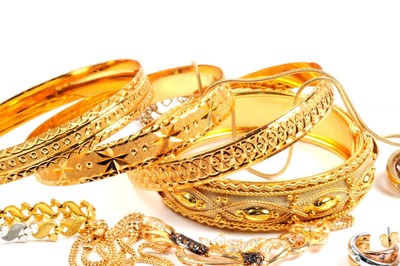



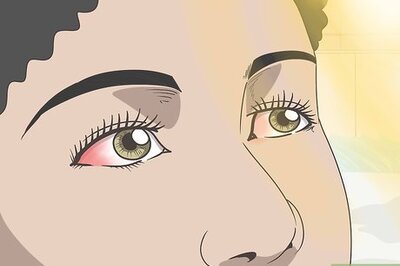


Comments
0 comment